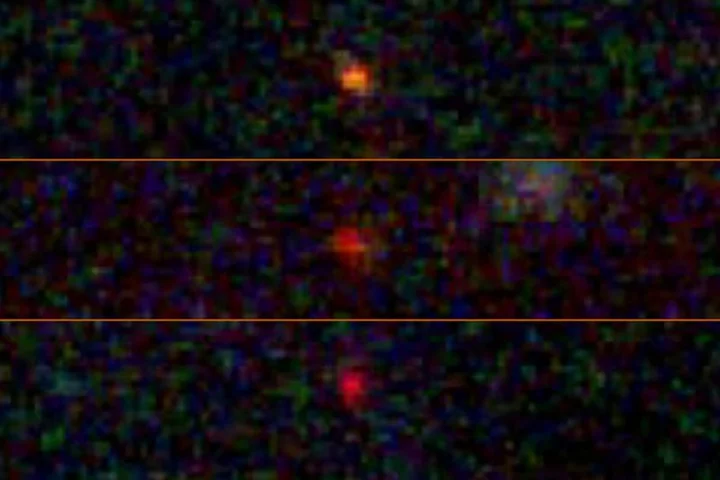By Will Dunham
WASHINGTON Scientists for the past 15 years have been looking for evidence of a type of star only hypothesized but never observed - one powered not by the fusion of atoms like the sun and other ordinary stars but by mysterious stuff called dark matter.
Thanks to the James Webb Space Telescope's ability to peer back to the dawn of the universe, the first good candidates to be "dark stars" have been identified.
The three objects spotted by Webb, which was launched in 2021 and began collecting data last year, were initially identified last December as some of the universe's earliest-known galaxies but, according to researchers, instead might actually be humongous dark stars.
Dark matter, invisible material whose presence is known mainly based on its gravitational effects at a galactic scale, would be a small but crucial ingredient in dark stars. These stars are described as made almost entirely of hydrogen and helium - the two elements present during the universe's infancy - with 0.1% of their mass in the form of dark matter. But self-annihilating dark matter would be their engine.
Dark matter is invisible to us - it does not produce or directly interact with light - but is thought to account for about 85% of the universe's matter, with the remaining 15% comprising normal matter like stars, planets, gas, dust and Earthly stuff like pizza and people.
Dark stars would be able to achieve a mass at least a million times greater than the sun and a luminosity at least a billion times greater, with a diameter roughly ten times the distance between Earth and the sun.
"They're big puffy beasts," said Katherine Freese, a theoretical astrophysicist at the University of Texas at Austin and senior author of the research published in the journal Proceedings of the National Academy of Sciences.
"They are made of atomic matter and powered by the little bit of dark matter that's inside them," Freese added.
Unlike ordinary stars, they would be able to gain mass by accumulating gas falling into them in space.
"They can continue to accrete the surrounding gas almost indefinitely, reaching supermassive status," said Colgate University astrophysicist and study lead author Cosmin Ilie.
They would not have been as hot as the universe's first generation of ordinary stars. It was the nuclear fusion occurring in the cores of those stars that spawned elements heavier than hydrogen and helium.
The three objects pegged as potential dark stars date to early in the universe's history - one from 330 million years after the Big Bang event that got the cosmos going 13.8 billion years ago, and the others from 370 million years and 400 million years after the Big Bang.
Based on the Webb data, these objects could be either early galaxies or dark stars, Freese said.
"One supermassive dark star is as bright as an entire galaxy, so it could be one or the other," Freese added.
While there is not enough data to make a definitive judgment about these three, Freese said, Webb may be able to obtain fuller data on other similarly primordial objects that could provide "smoking gun" evidence of a dark star.
Conditions in the early universe may have been conducive to formation of dark stars, with high dark matter densities at the locations of star-forming clouds of hydrogen and helium. Such conditions are highly unlikely today.
Freese and two colleagues first proposed the existence of dark stars in 2008, basing the name on the 1960s Grateful Dead song "Dark Star."
"It would be really super exciting to find a new type of star with a new kind of heat source," Freese said. "It might lead to the first dark matter particles being detected. And then you can learn about the properties of dark matter particles by studying a variety of dark stars of different masses."
(Reporting by Will Dunham, Editing by Rosalba O'Brien)

